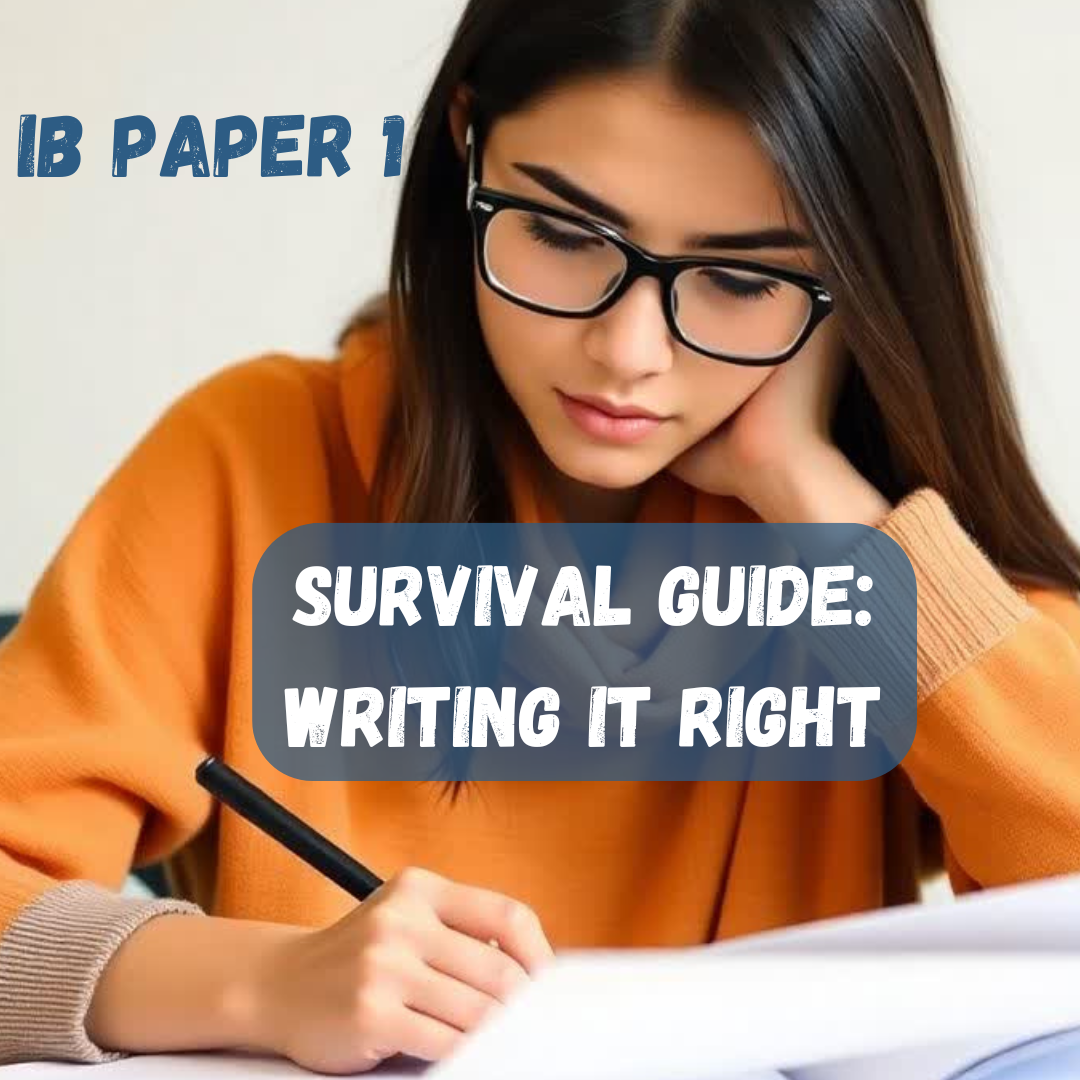IB English Paper 1: Survival Guide: Writing it Right
This blog walks you through the essential elements of crafting a compelling analysis, focusing on how to approach the introduction, body, and conclusion.
Using an example editorial about climate change, we’ll explore how to identify key techniques, evaluate their impact, and build a response that is both insightful and well-organized. Whether you’re just starting or looking to refine your skills, this guide will help you write it right.
The First Paragraph: Getting the Intro Right
Here's a strong introduction analyzing a newspaper editorial about climate change (responding to a guiding question about how language choices create urgency):
In "Our Last Chance," what starts as a typical climate change editorial becomes something more powerful through its clever use of language. The writer doesn't just tell us climate change is serious - they make us feel it. By mixing hard facts with vivid descriptions and speaking directly to readers, the piece turns distant climate threats into something that feels personal and urgent. The way the writing moves between scientific data and emotional appeals makes it almost impossible to keep climate change at arm's length - we're forced to see it as our problem, right now.
Notice how this introduction still:
Names the text type
Points to specific techniques
Shows the overall effect
Answers the guiding question about urgency
Sets up what you'll analyze
Stays focused and analytical
The Body Paragraph: Writing the Body Right
Here's how a writer combines data and emotion to make climate change feel personal.
The editorial's power comes from how it weaves together statistics and emotional triggers. When the author writes "Your child's future holds just 1,000 more days of breathable air," they transform a clinical fact about air quality decline into a personal gut-punch. This shift from abstract to intimate continues with phrases like "our dying oceans" and "your neighborhood under water," each paired with precise measurements of ocean acidification and sea level rise. By alternating between scientific data and these emotionally charged images, the writer makes climate change both scientifically credible and emotionally real. The use of possessive pronouns "your" and "our" particularly stands out – they force readers to see themselves in the crisis rather than viewing it as someone else's problem. This strategic interplay between data and emotion ultimately succeeds in making readers feel both informed and invested in climate action.
Why this body paragraph works:
Opens with a clear focus
Uses specific quotes from the text
Shows HOW techniques work together
Explains WHY these choices matter
Links back to overall effect
Stays focused on analysis, not summary
Uses accessible language while maintaining academic depth
Evaluates effectiveness of the topic
The Conclusion: Evaluating Effectiveness and Ineffectiveness
A strong conclusion can take different forms depending on your analysis and time constraints. Here are two model conclusions analyzing the same editorial, each with distinct advantages:
If time is tight:
The shorter version delivers key insights efficiently, balancing praise and criticism while maintaining analytical depth. Notice how it identifies both a strength (personalizing the issue) and a weakness (overwhelming tone) in just two sentences.
Shorter, direct version:
The editorial succeeds in making climate change feel personal through powerful imagery and local examples, but its excessive use of dramatic language weakens its overall impact. While readers understand the urgency, they may resist the message due to its overwhelming tone.
For deeper analysis:
The longer version weaves together multiple strands of analysis, exploring how techniques interact and considering broader implications. This approach shows sophisticated understanding by examining the tension between the text's goals and its execution.
More analytical version:
The writer's skillful blend of data and emotion largely achieves its aim of creating urgency, though with notable limitations. Where the piece excels is in transforming statistics into stories, making abstract threats tangible. However, its effectiveness is compromised by an overtly dramatic tone that may trigger skepticism rather than action. This tension between powerful persuasion and potential alienation reflects the broader challenge of communicating climate crisis without inducing paralysis.
Both versions:
Avoid simple summary
Balance strengths and weaknesses
Link techniques to their impact
Consider reader response
Final Thoughts
IB English Paper 1 is as much about critical thinking as it is about clear communication. By naming text types, pinpointing language techniques, and analyzing their effects, you can craft a response that balances depth with clarity. Whether you’re discussing the personalizing power of possessive pronouns or the tension created by dramatic language, the key is to stay analytical and focused on the guiding question. With practice, you’ll not only excel in the exam but also develop skills that go beyond the classroom—skills that help you engage critically with the world around you.

